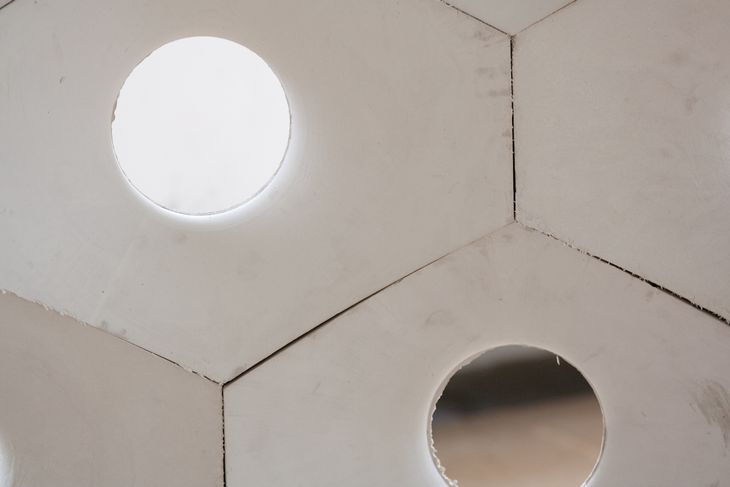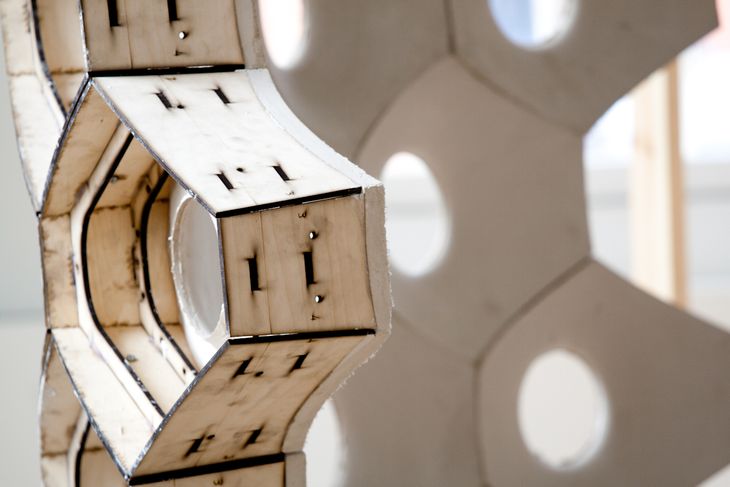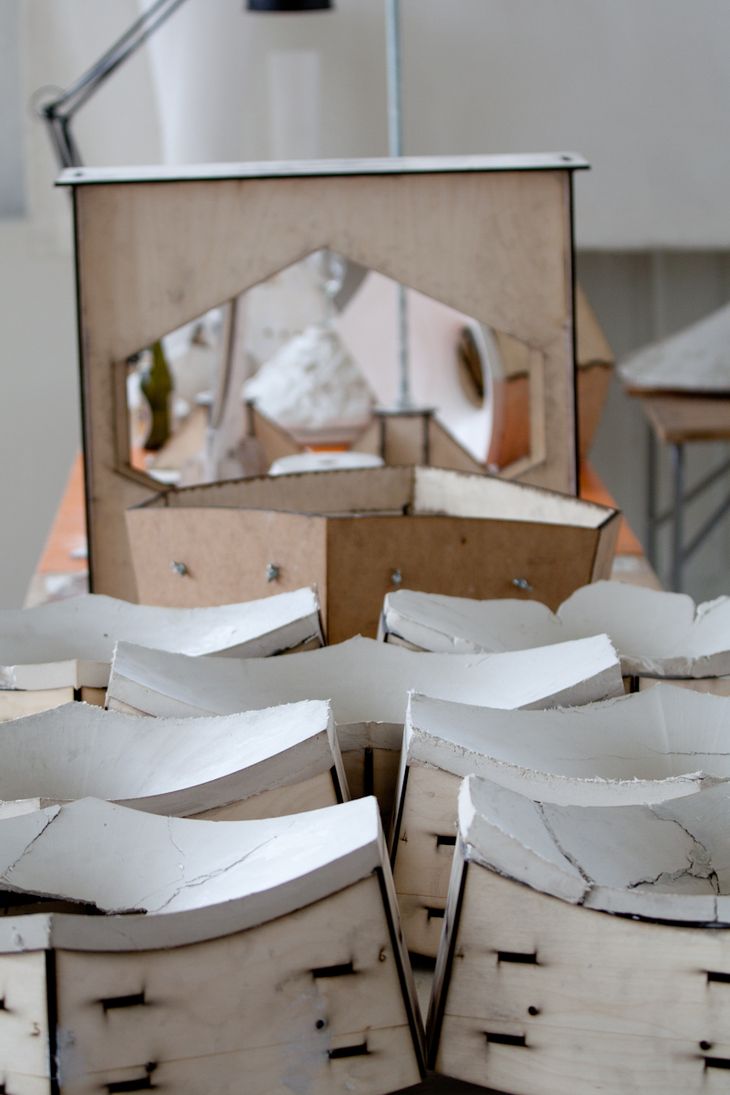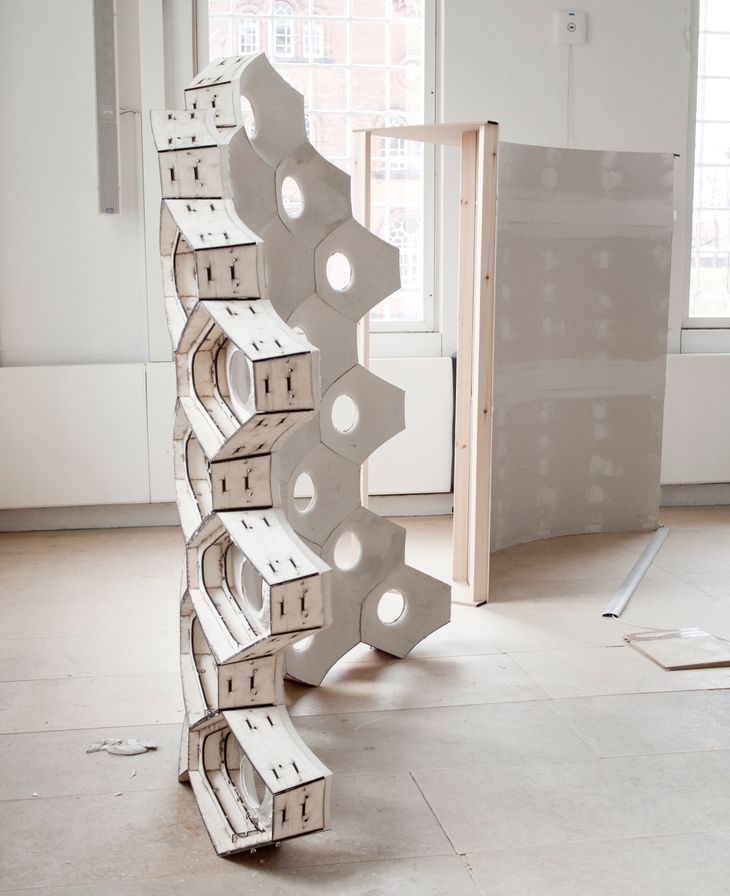
The hyperboloid responsive acoustic surface and the flat counterpart
The responsive acoustic surfaces workshop was held at SmartGeometry 2011 in the Royal Danish Academy of Fine Arts, Copenhagen. The workshop was inspired by the diffuse soundscape found within Antoni Gaudí’s Sagrada Família – a soundscape that lacks the echoes and long reverberations characteristic of other spaces built from acoustically reflective surfaces like stone. Our hypothesis was that the hyperboloids of the Sagrada Família were scattering the sound and thereby reducing audible reverberation.
Using a combination of 1:1 prototypes, 1:10 3d prints, and digital simulations, the participants on the four day workshop explored the acoustic properties of hyperboloids. The workshop cumulated with the construction of a curved plaster wall comprising of twenty-nine hyperboloids. When compared to a flat plaster wall, there was noticeably less audible reverberation from the hyperboloid wall. This outcome suggests that acoustic engineers can control reverberation not only by reflecting sound away from the listener, or absorbing the sound, but also by creating geometric patterns that scatter sound.
My role in this workshop was in coordinating, designing, detailing, and manufacturing the hyperboloid wall, as well as assisting in the teaching of the participants. A technical analysis of the responsive acoustic surface can be found here.
Workshop participants: Adam Laskowitz, Ben Coorey, Eric Turkiemicz, Giovanni Betti, Kathy Yuen, Ralf Lindemann, Robin Bentley, Thomas Hay. Cluster champions: Phil Ayres, Mark Burry, Jane Burry, Daniel Davis, John Klein, Alexander Peña de Leon, Brady Peters and Tobias Olesen.

Our first hyperboloid, pretty rough! (February 2011)
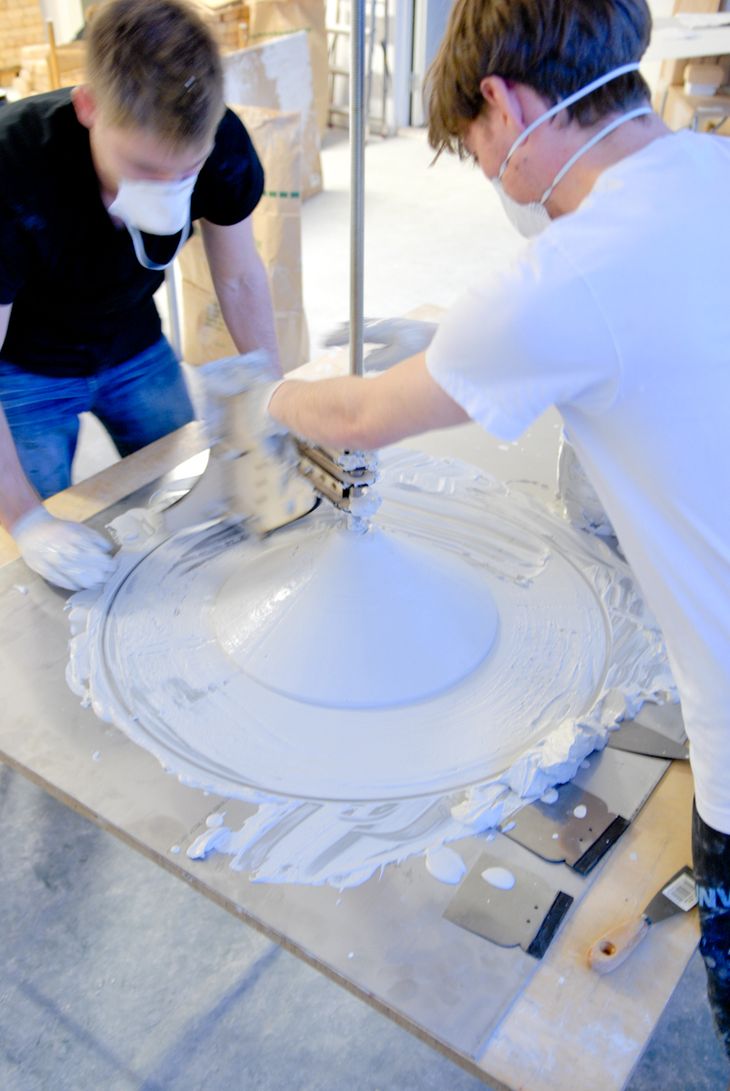
Casting a hyperboloid with John Klein
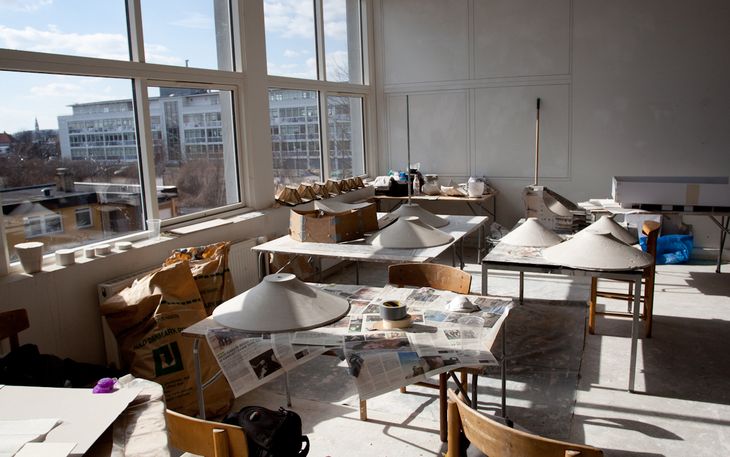
Room of hyperboloids, Royal Danish Academy of Fine Arts.
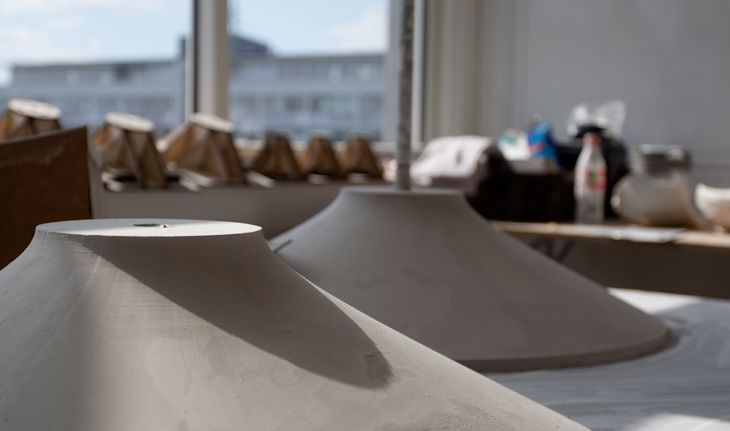
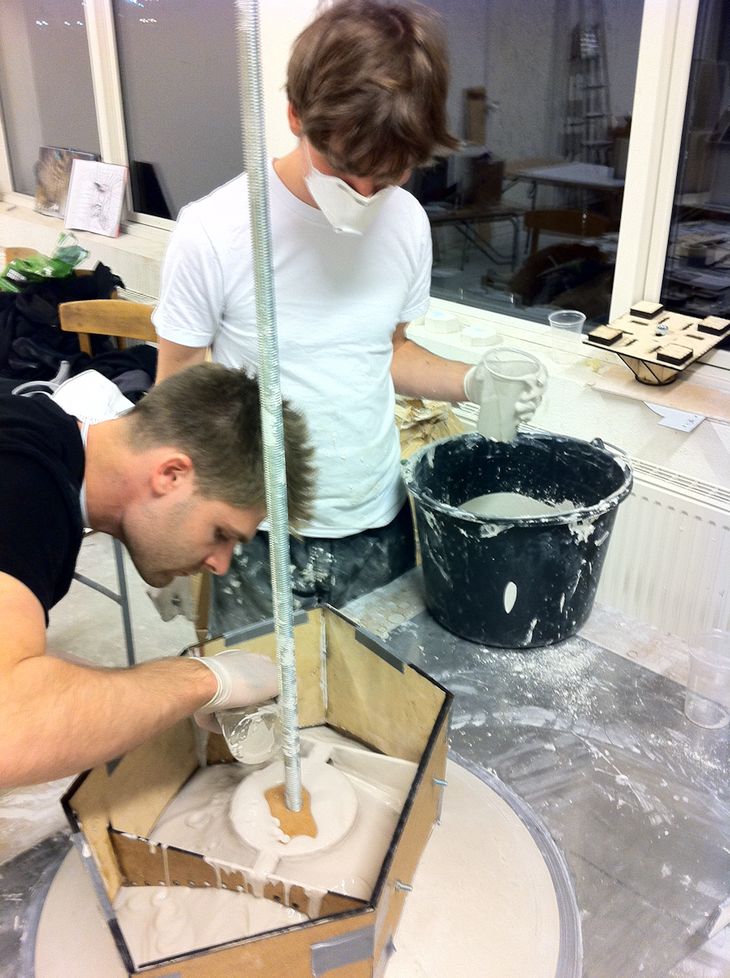
Casting a brick with John Klein
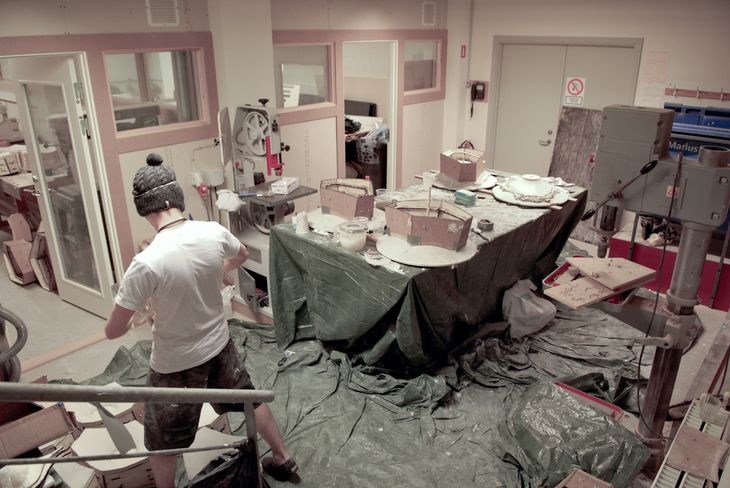
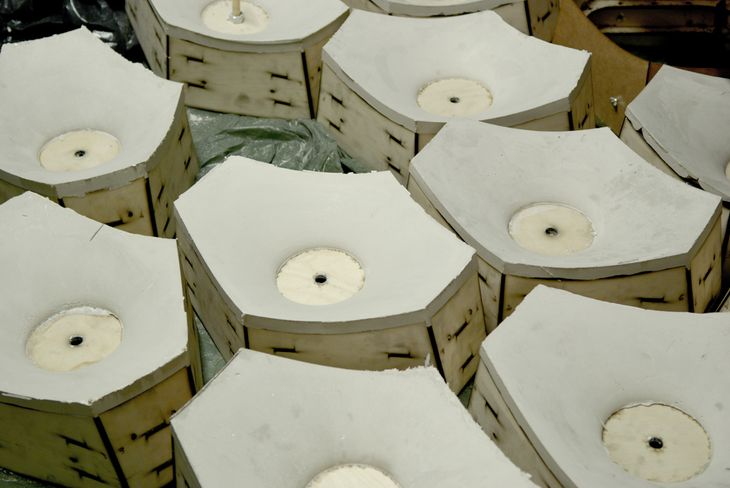
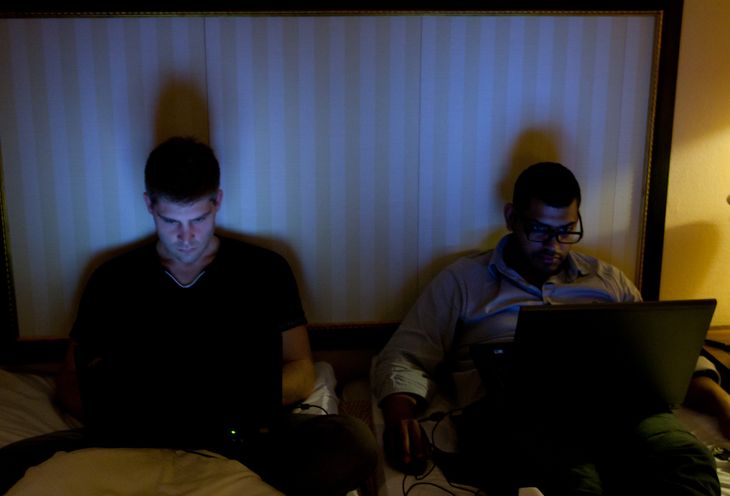
John Klein and Alex Pena preparing the digital files before the workshop
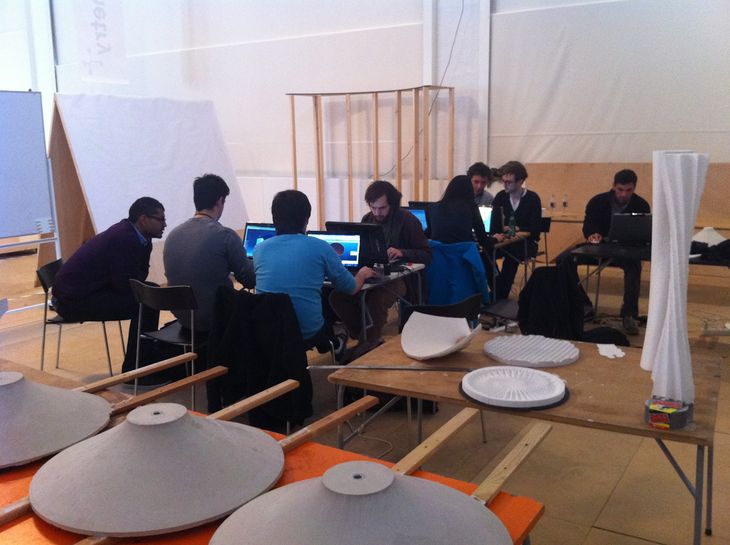
Participants in the workshop
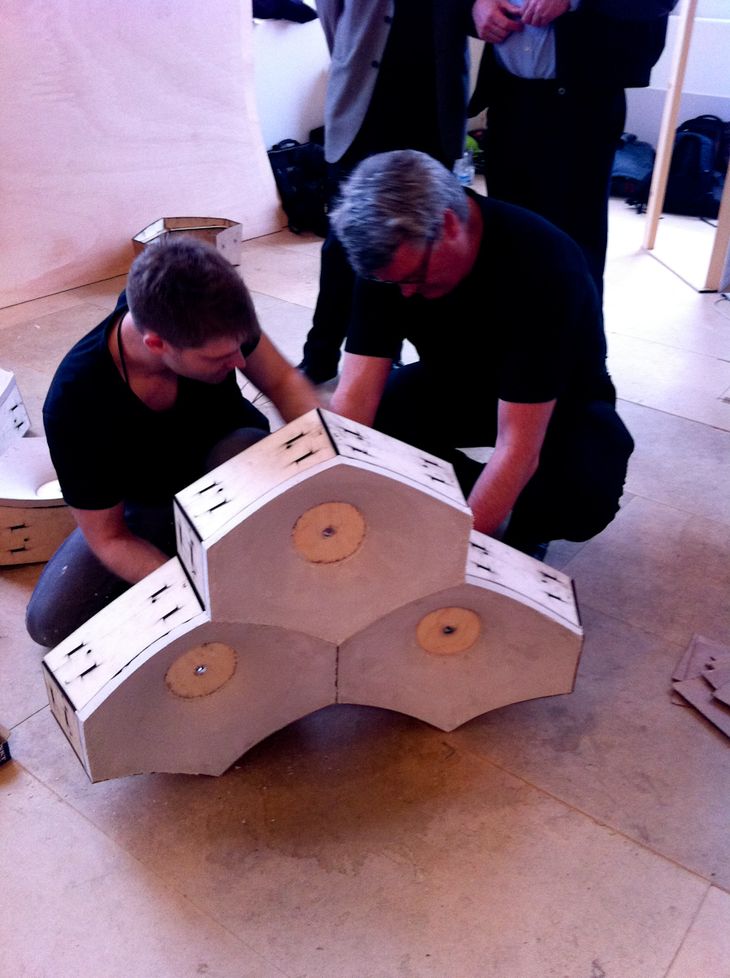
John Klein and Mark Burry put together the first bricks
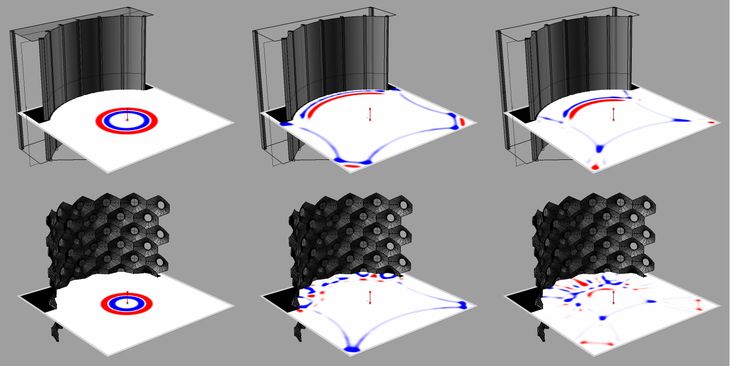
Testing soundwaves in Grasshopper
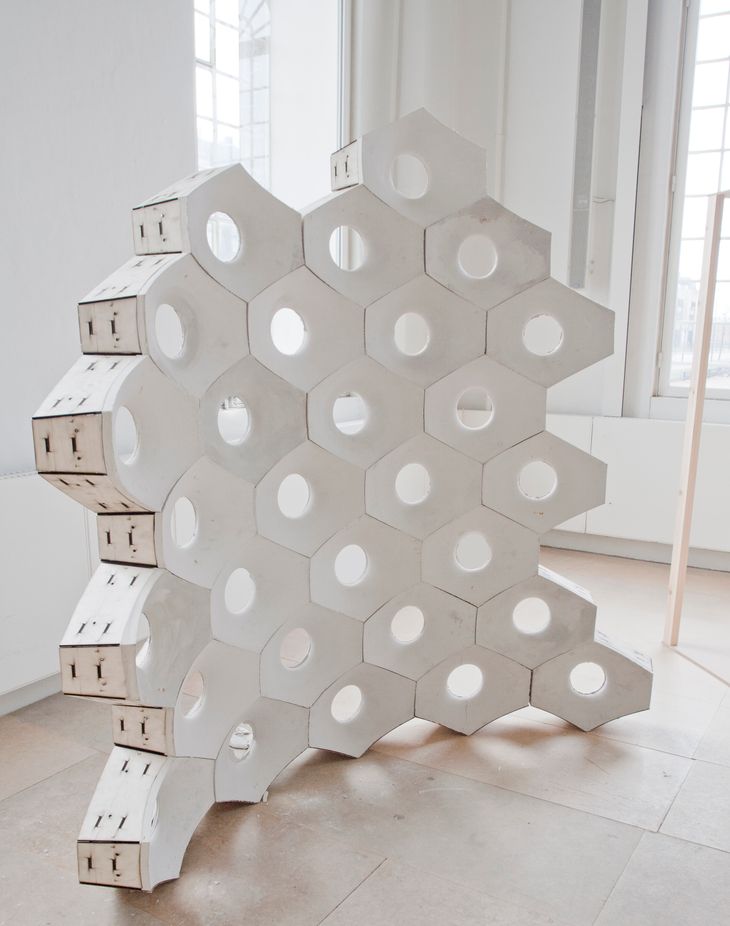
The responsive acoustic surface
